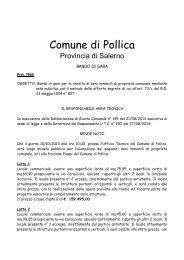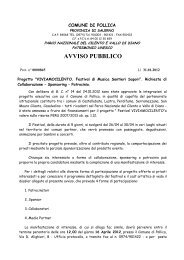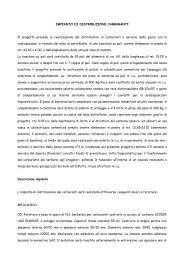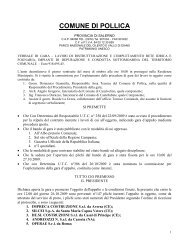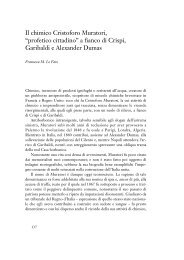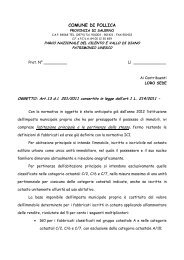Traditions - Comune di Pollica
Traditions - Comune di Pollica
Traditions - Comune di Pollica
Create successful ePaper yourself
Turn your PDF publications into a flip-book with our unique Google optimized e-Paper software.
POLLICA<br />
The first citation of <strong>Pollica</strong> was in 1113 in a document which attests the transfer of<br />
<strong>Pollica</strong><br />
properties in the village from Torgisio II Sanseverino to the Abbey of Cava. At the<br />
end of the 13th century the village belonged to the D’Alemagna family, then the<br />
Capano family, who were originally from Rocca Cilento. The Capano princes held<br />
<strong>Pollica</strong> until the family line came to an end (1795), when the feud was inherited and<br />
maintained by the De Liguori family until the end of the feudal system.<br />
The Castello dei Principi Capano (Castle of the Capano Princes) was inherited in 1290<br />
by Guido d’Alment, who came to Italy during the reign of Charles I of Anjou, and<br />
was subsequently bought by the Capano family. The castle as it is today is the result<br />
of restoration work carried out in 1610 by Vincenzo Capano. The impressive square<br />
tower, with a single monofora window on each of its 3 floors, is very picturesque<br />
and dominates the little village centre. The enchanting service areas of the castle<br />
- the ugliaro (a store room for oil), olive press, guard room and stables - are<br />
simple and well-preserved.<br />
Accor<strong>di</strong>ng to local tra<strong>di</strong>tion Saint Alfonso De’Liguori stayed in Capano Castle when he<br />
collected information in <strong>Pollica</strong> on pagan customs in Cilento. A room in the castle is still<br />
known as “Saint Alfonso’s room”. The castle was bought by the local council in 1997.<br />
Festival<br />
2nd July - Festa della Madonna<br />
delle Grazie. Procession through<br />
the streets from the convent to<br />
the parish church, led by the<br />
‘cente’ (ex voto, or offerings, in<br />
the form of boats carried on the<br />
heads of bare-footed women),<br />
and by the confraternity.<br />
The Convento Francescano <strong>di</strong> Santa Maria delle Grazie (Franciscan Monastery of Santa Maria<br />
delle Grazie) was begun in 1611 and finished in 1625. After various events that determined<br />
its closure and reopening on several occasions, it has been operating continuously since<br />
1931, when it was restored, improved and reopened by Father Vincenzo Riccio of Siano.<br />
The church houses four small altars on the sides, three of which bear the coat of arms of<br />
the Capano family. The altarpieces that line the entrance are striking; they are attributed<br />
to the Neapolitan painter Malinconico, a follower of Luca Giordano. The panelled wooden<br />
ceiling, by Giuseppe Marrocco of Celso, surrounds a painting by M. Cilento depicting the<br />
Assumption. Particularly worth seeing are the 18th century wooden choir, the 1741 organ,<br />
the sacristy with its wooden ceiling, a large cupboard from 1772 and a snail-shaped lavabo<br />
in sculpted stone.<br />
The Chiesa <strong>di</strong> San Pietro (St. Peter’s Church) is the oldest in <strong>Pollica</strong>. Built in 1524 it was<br />
once a public oratory belonging to the Pepe family. In the little church, now deconsecrated,<br />
the family arms can be admired on the main door and inside, in the central nave, there is<br />
a beautiful polychrome marble altar and a stone holy water font.



